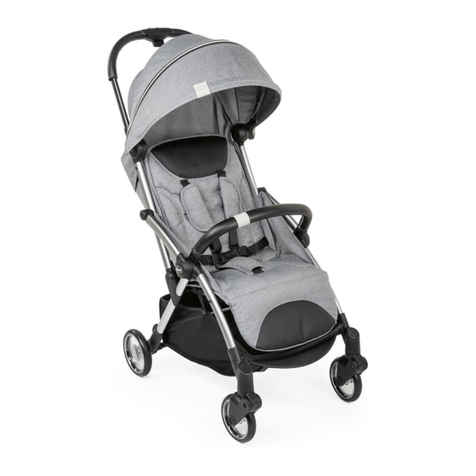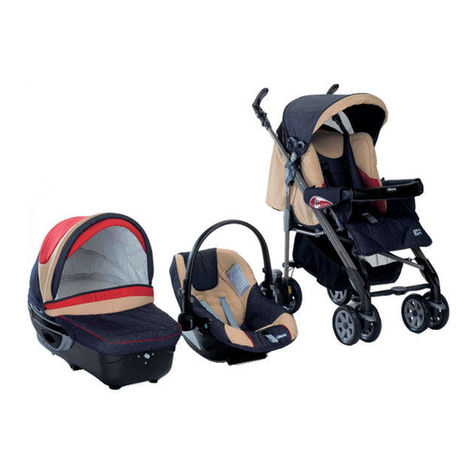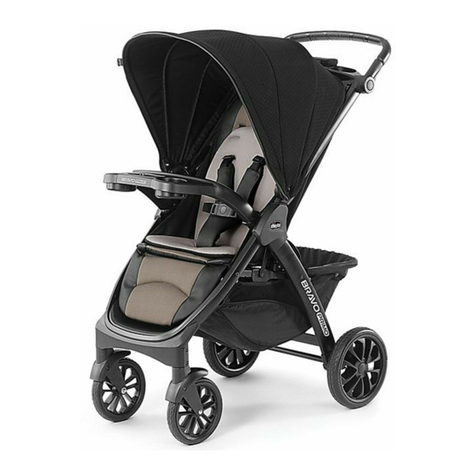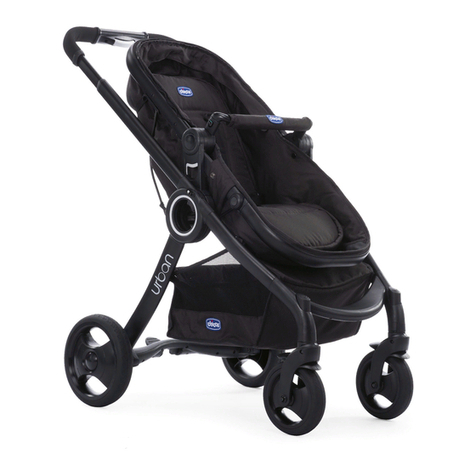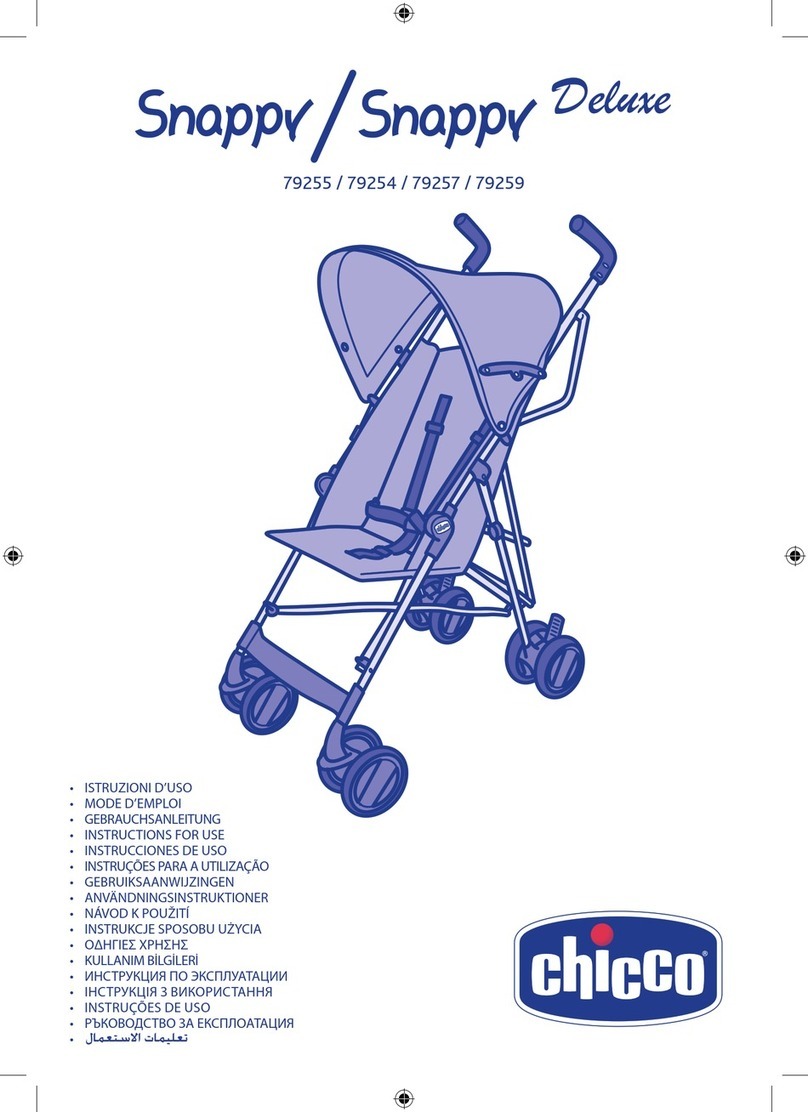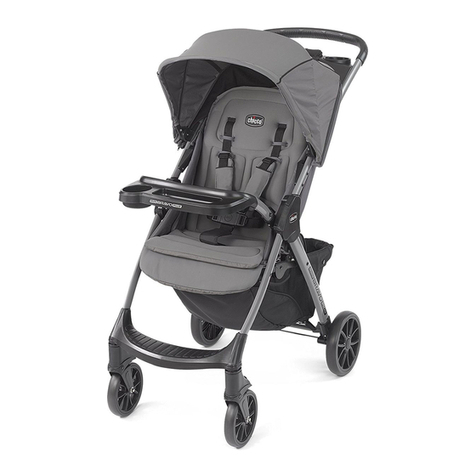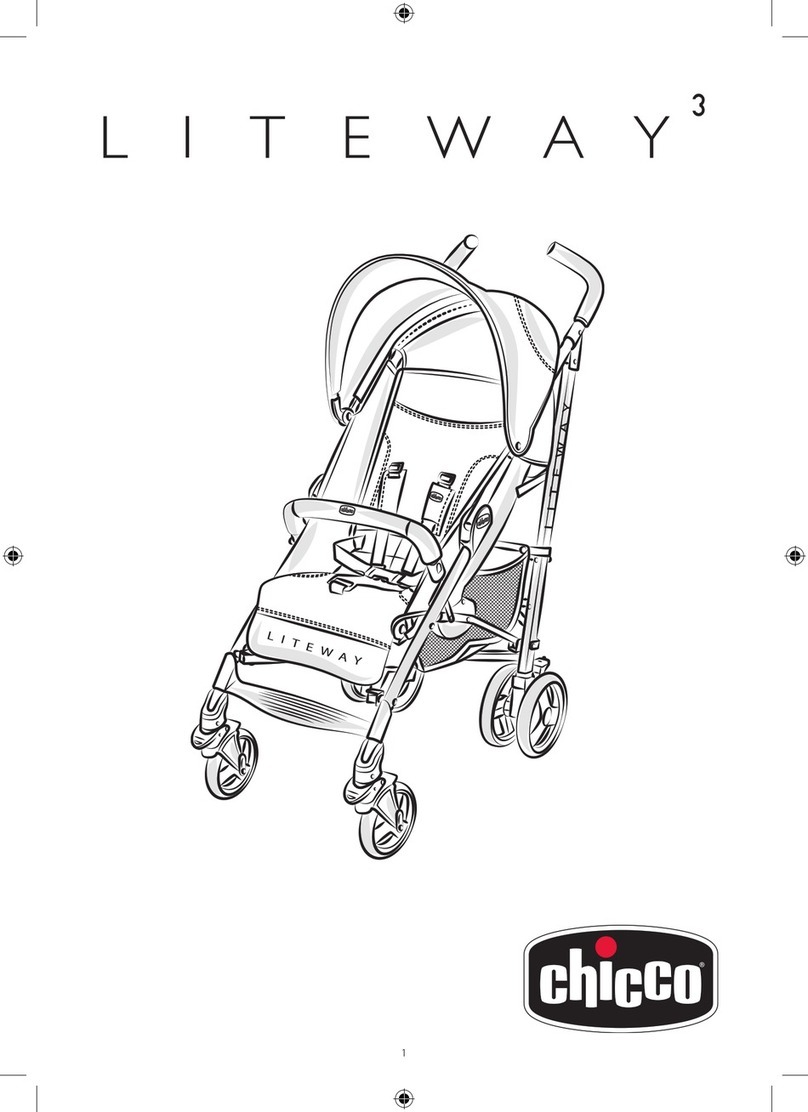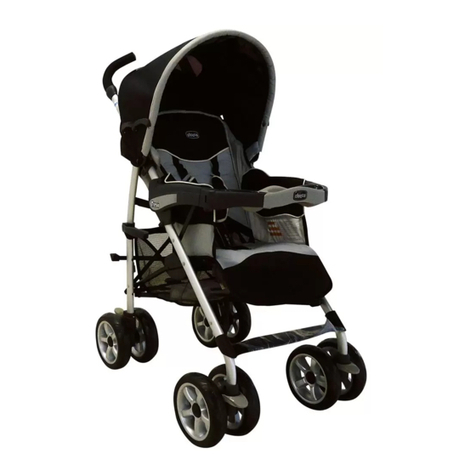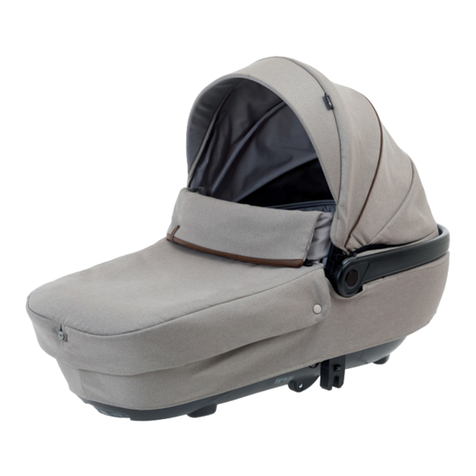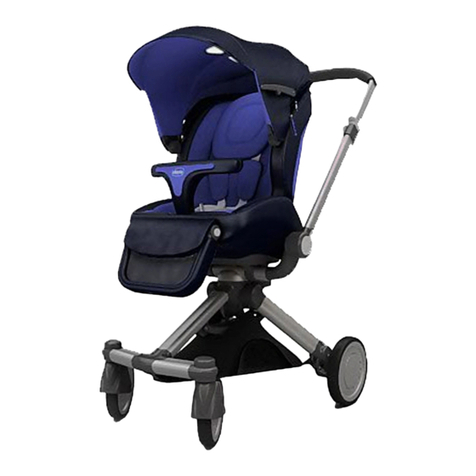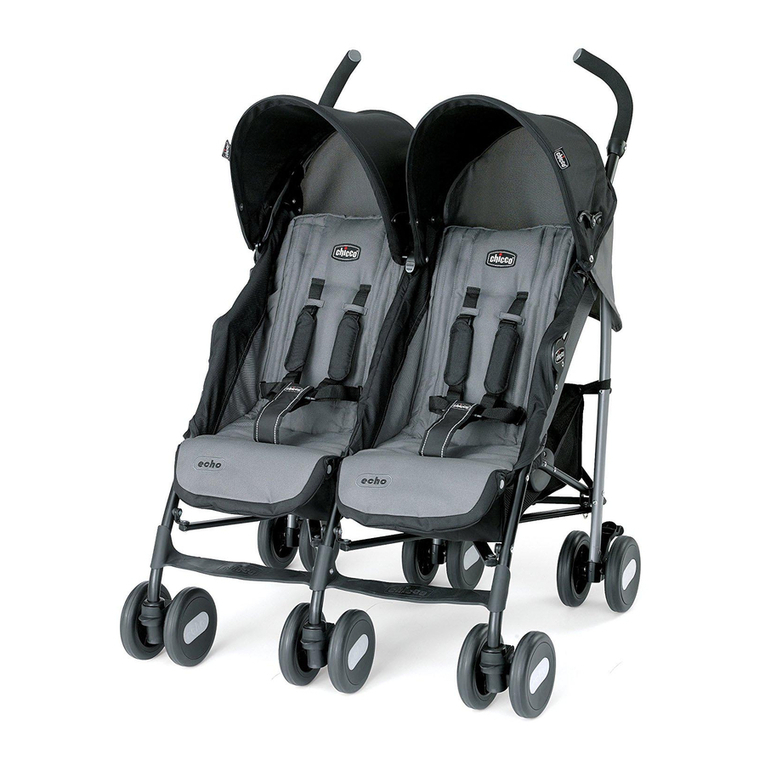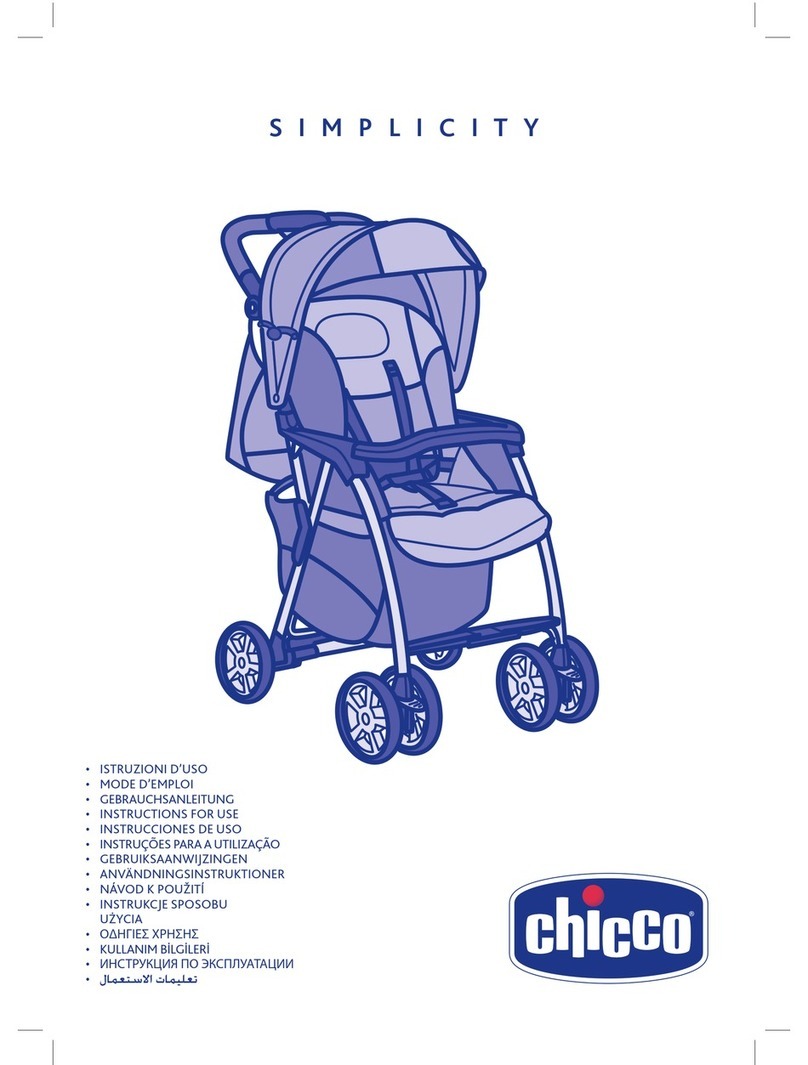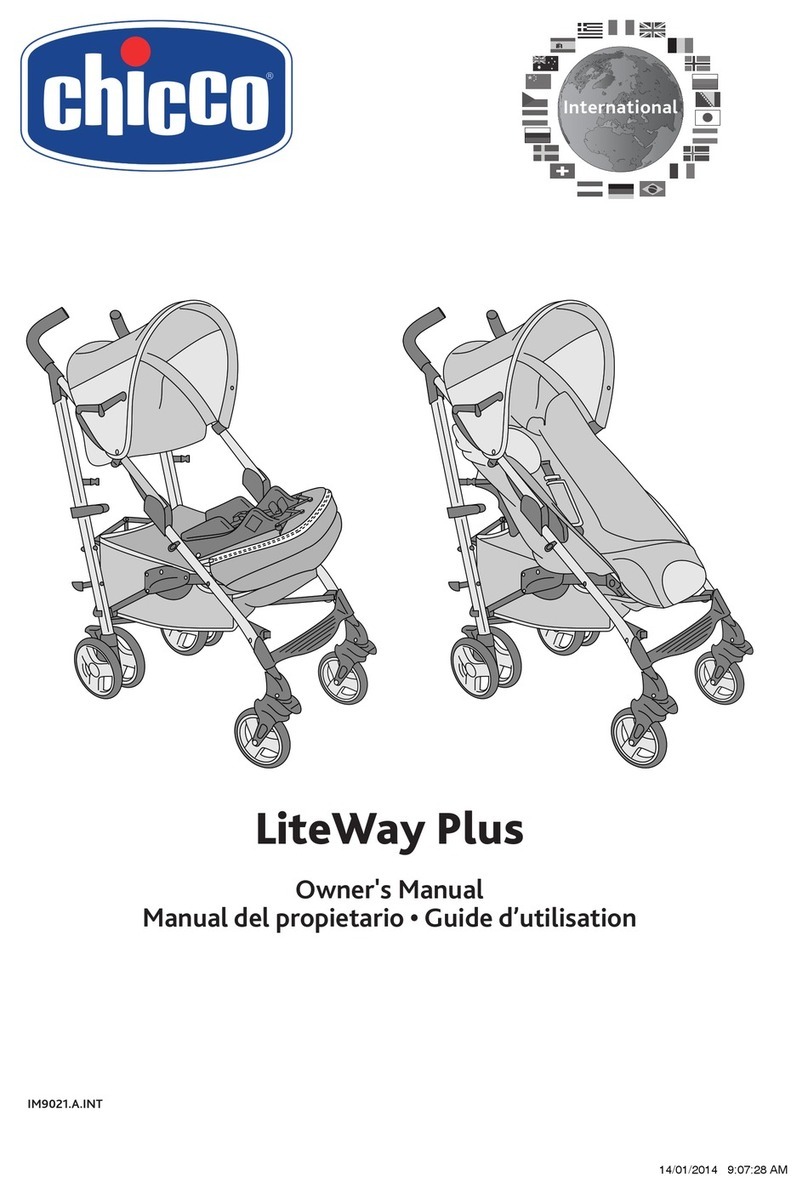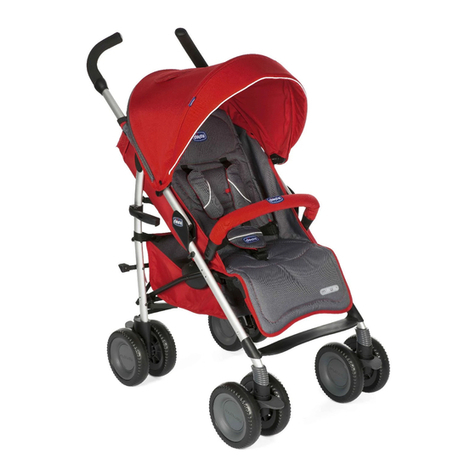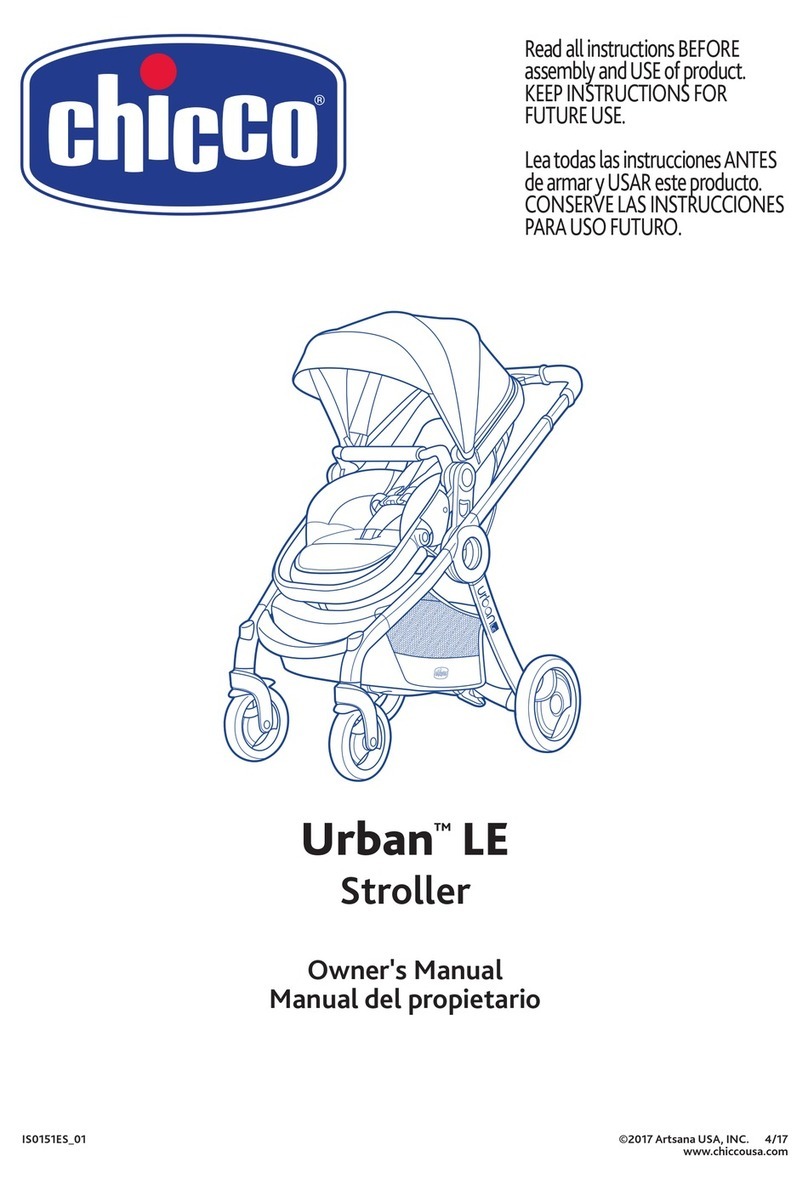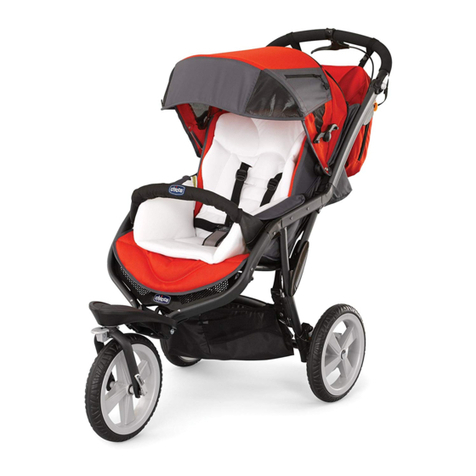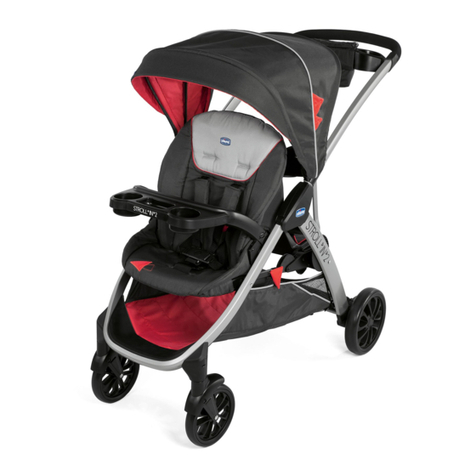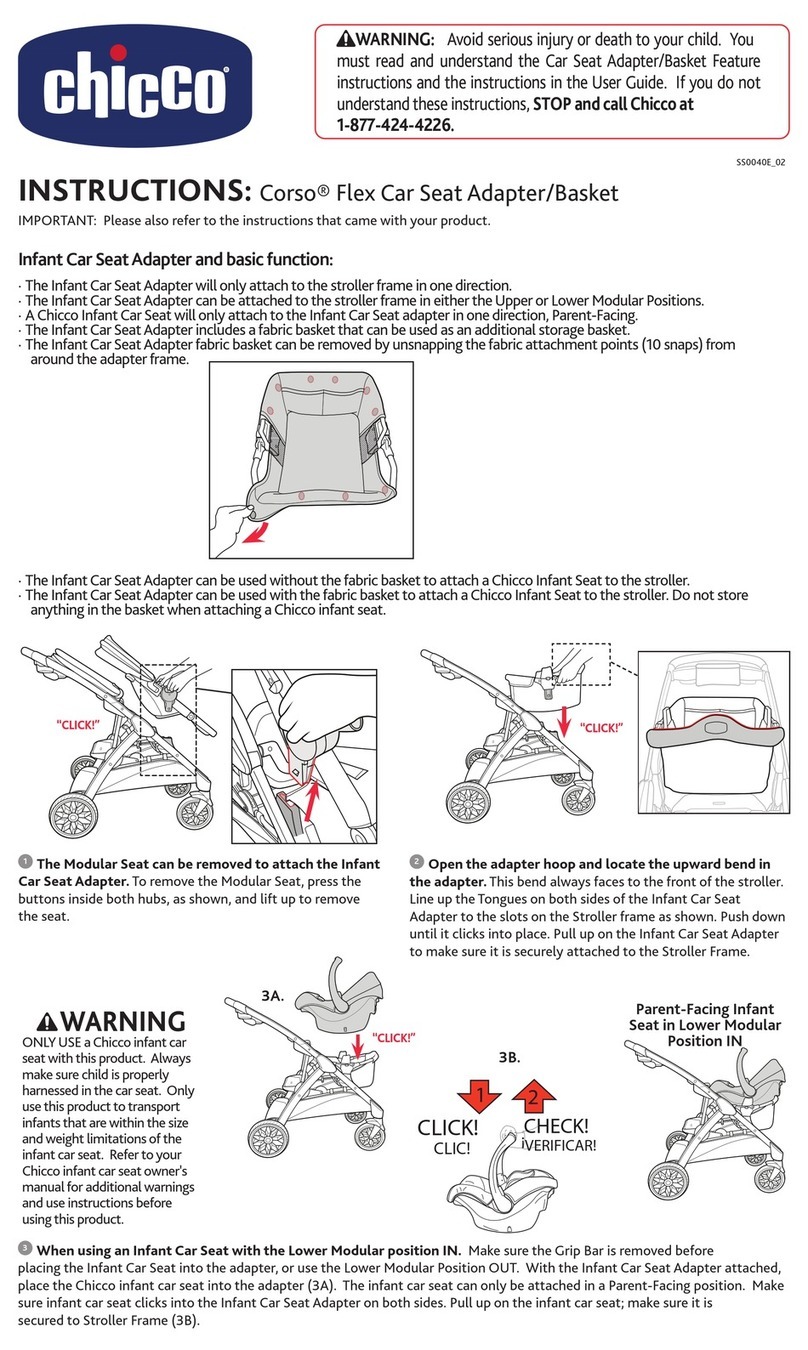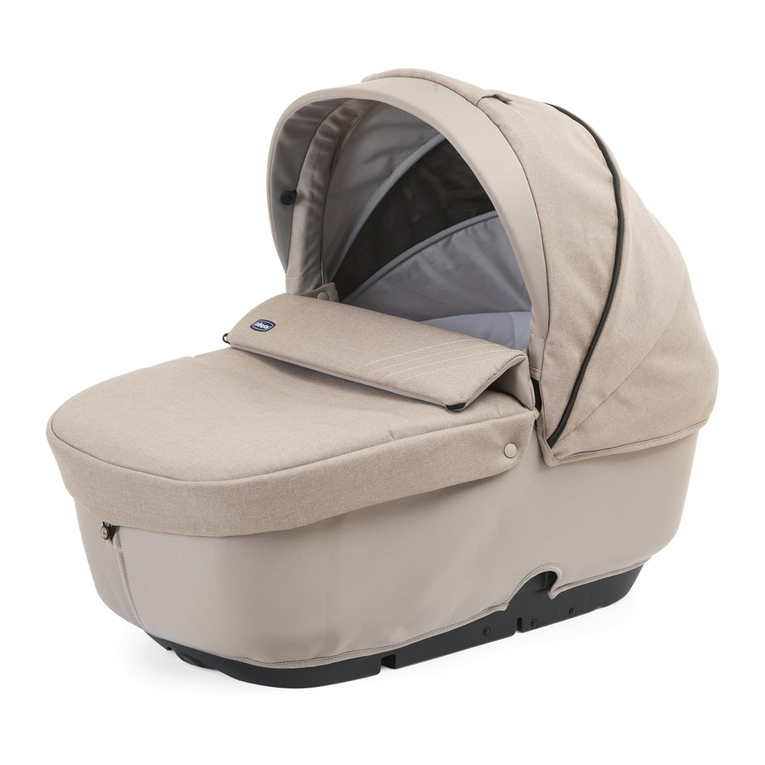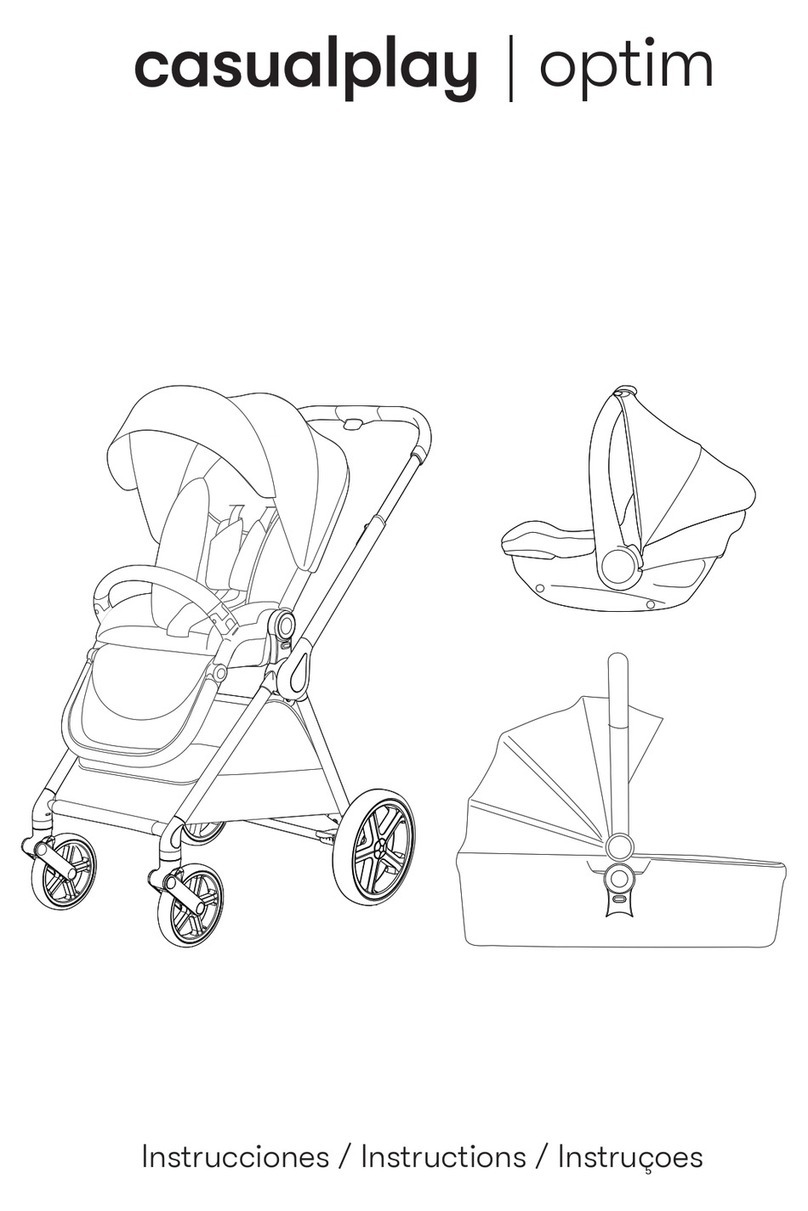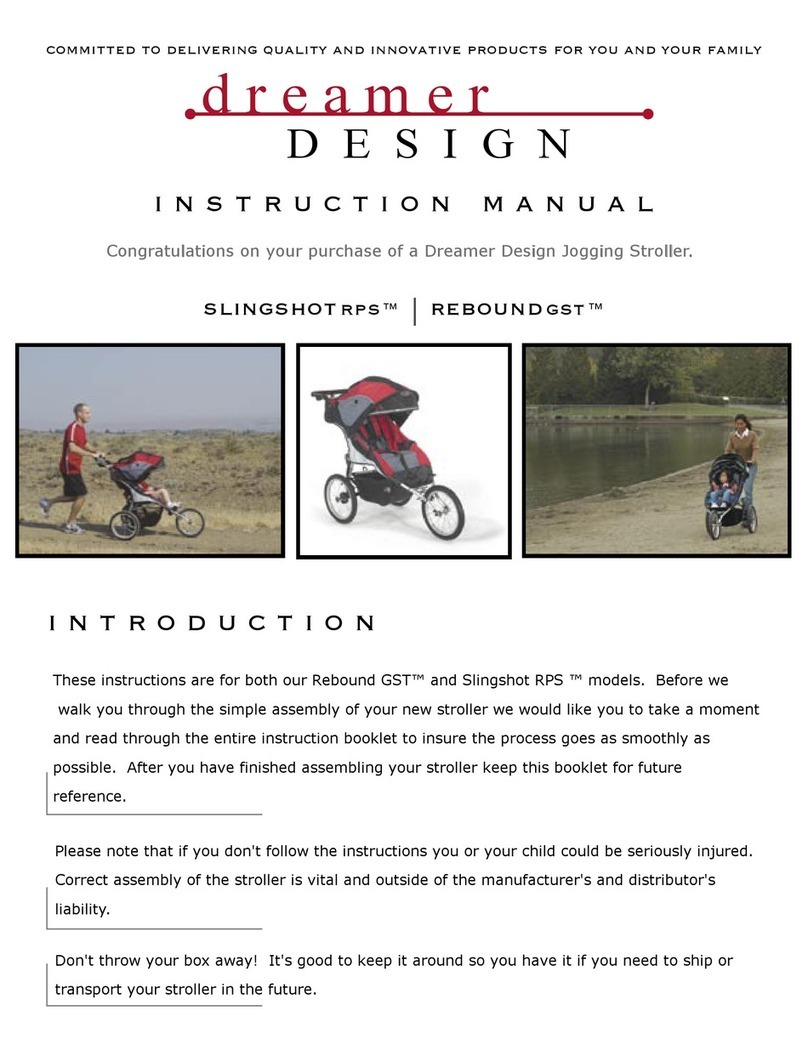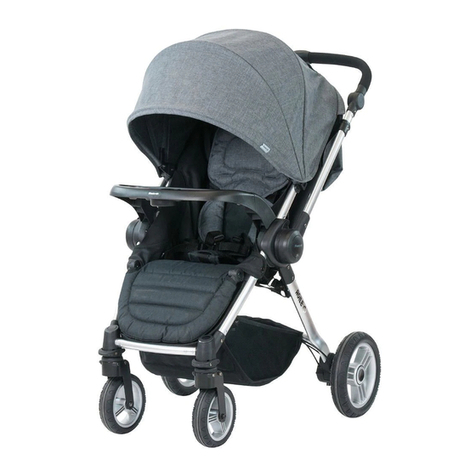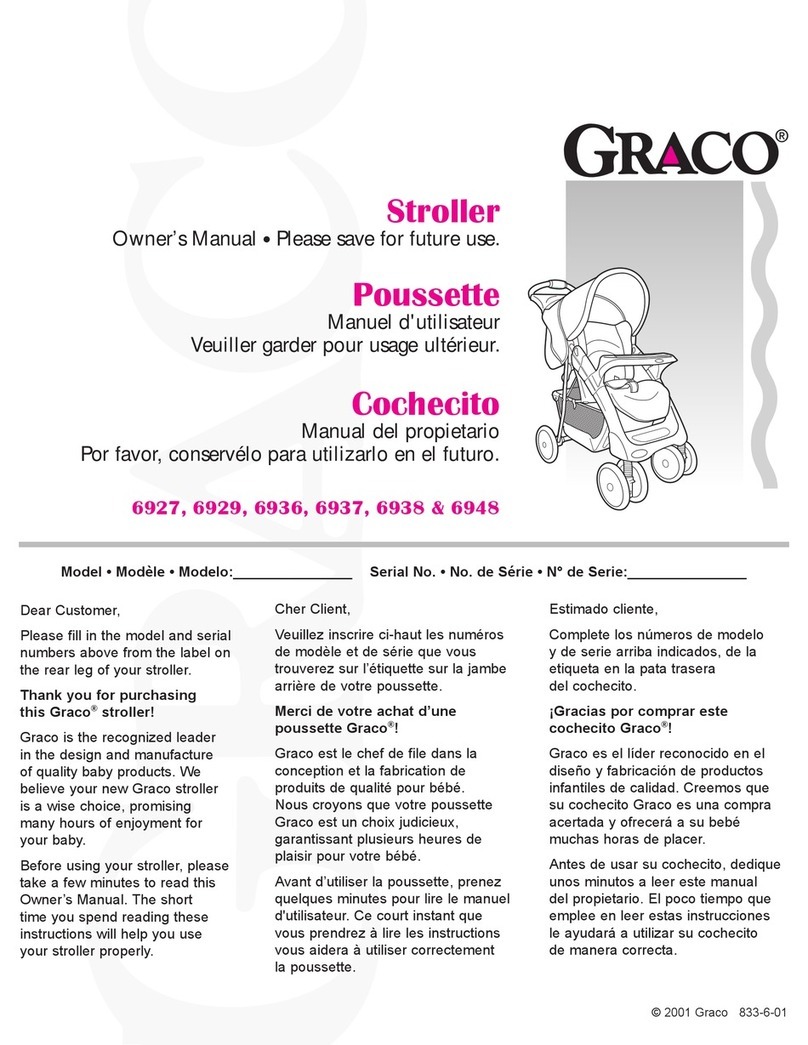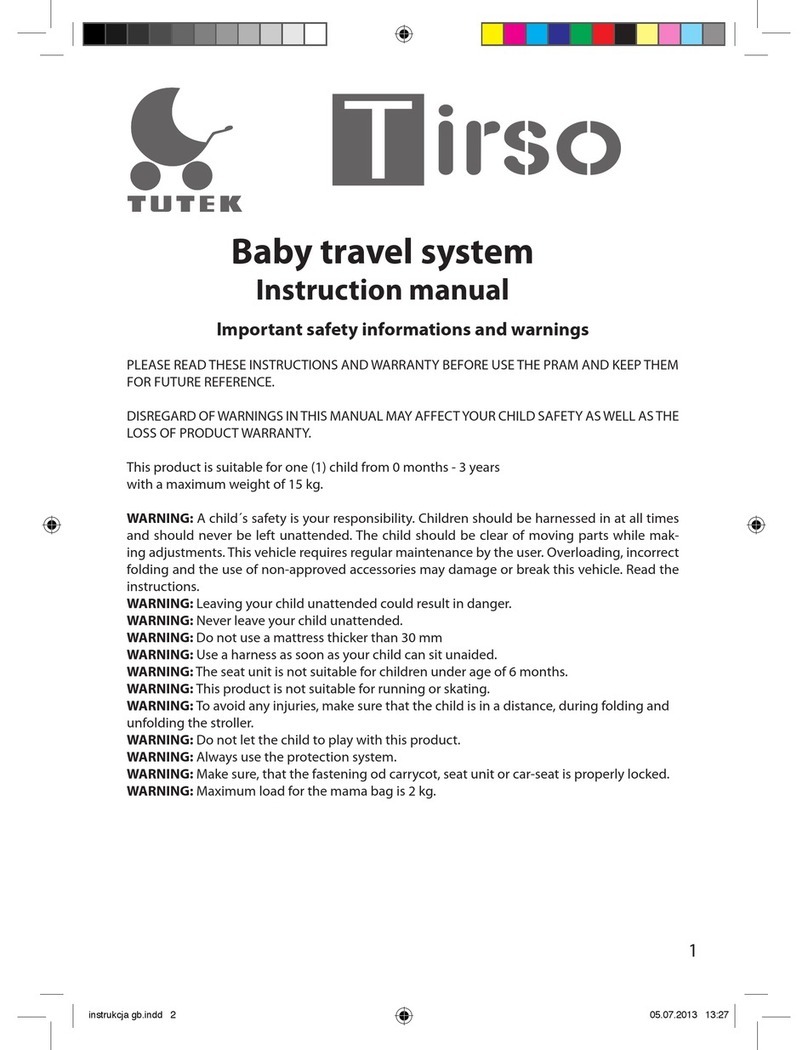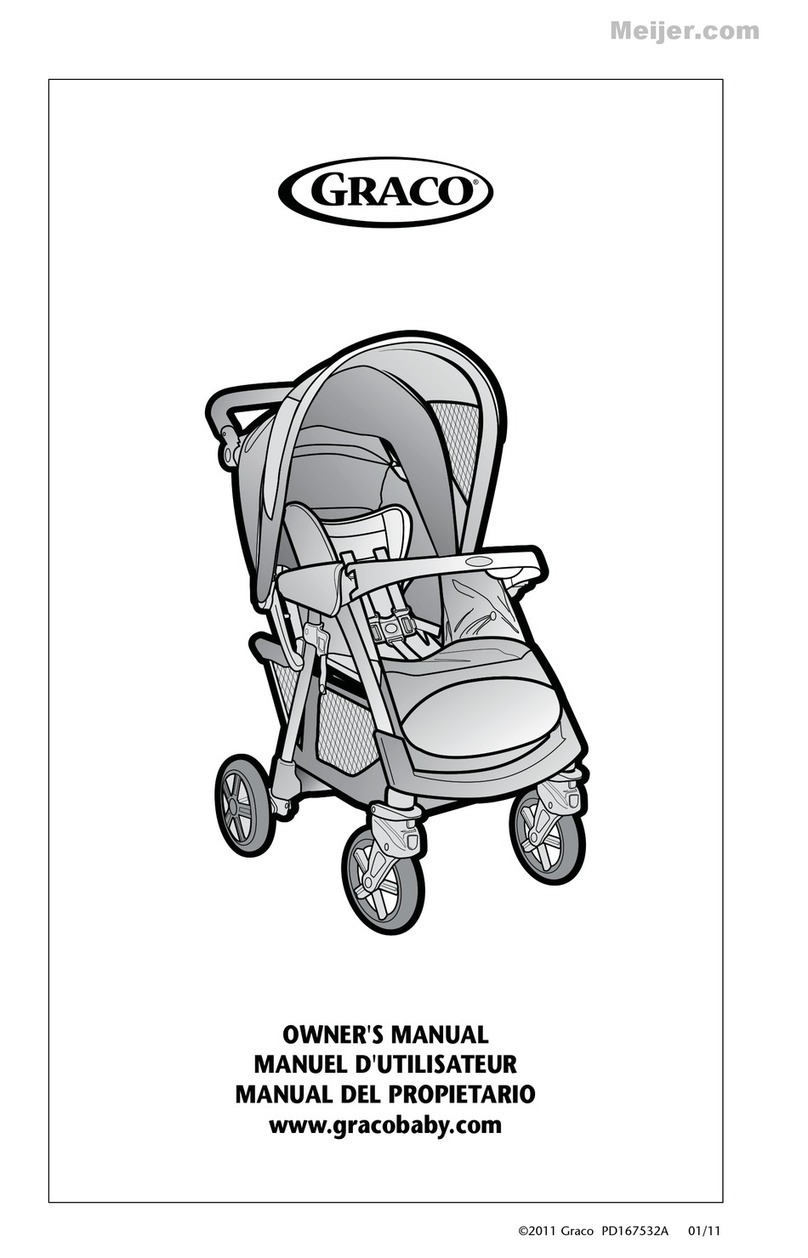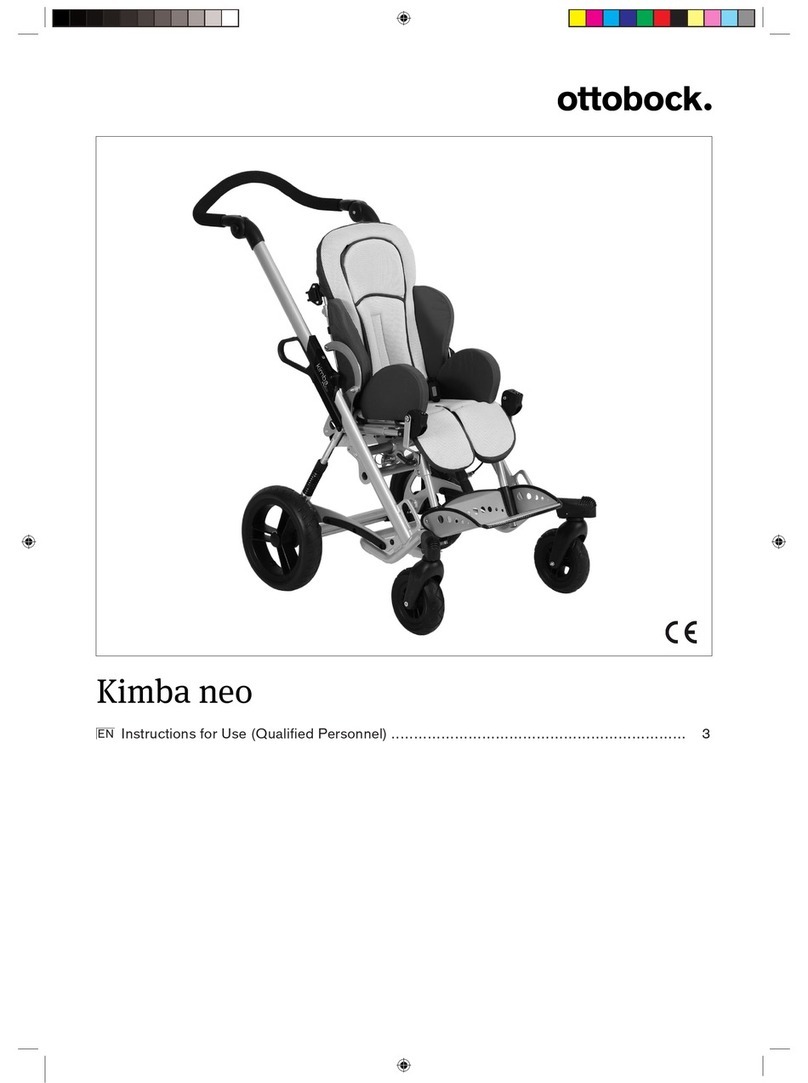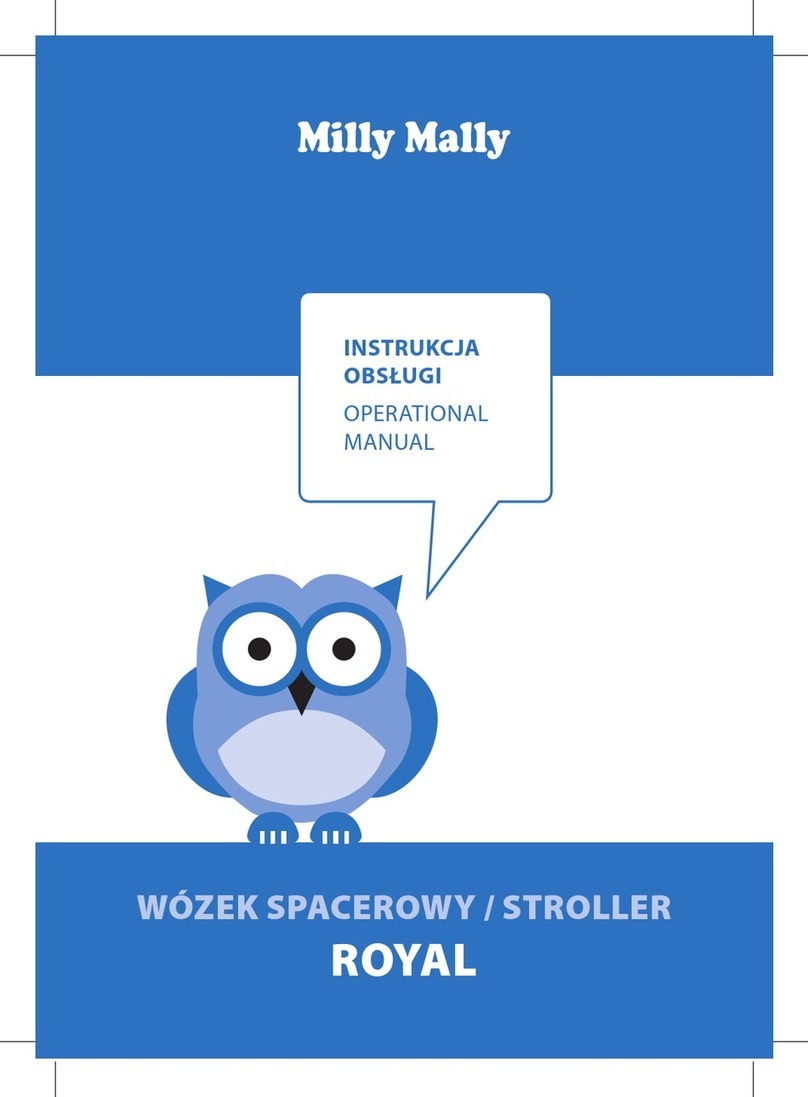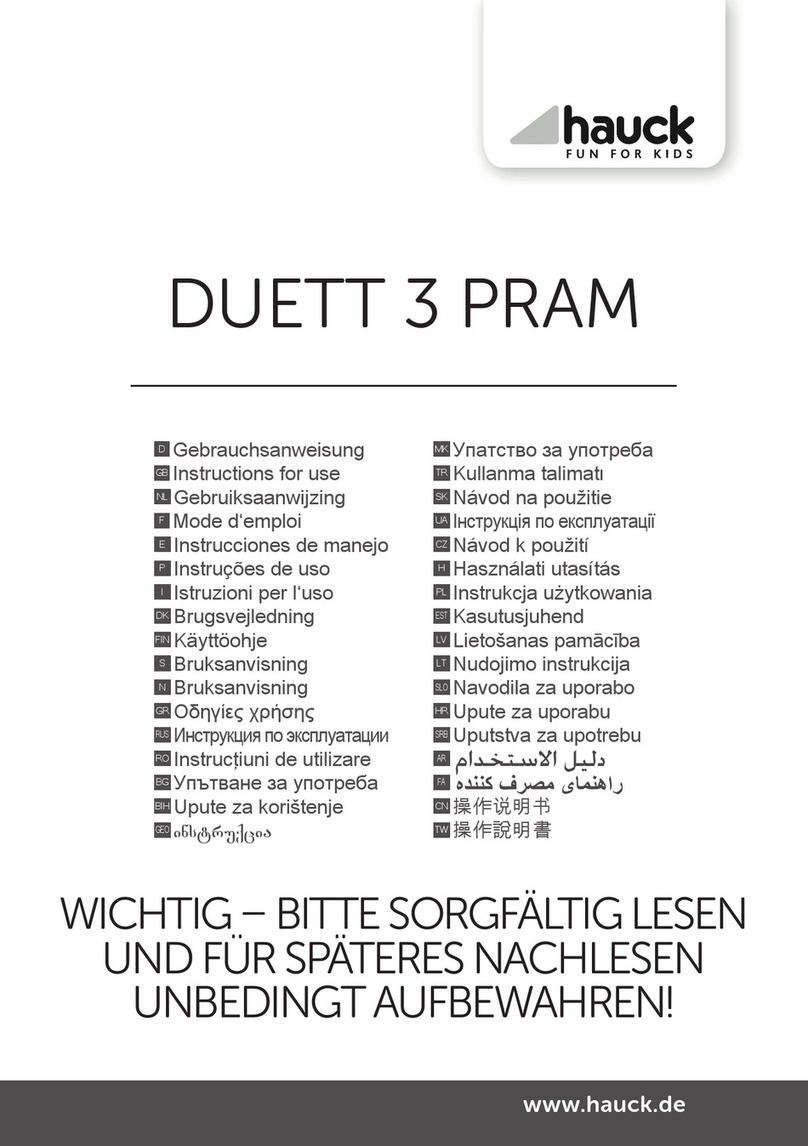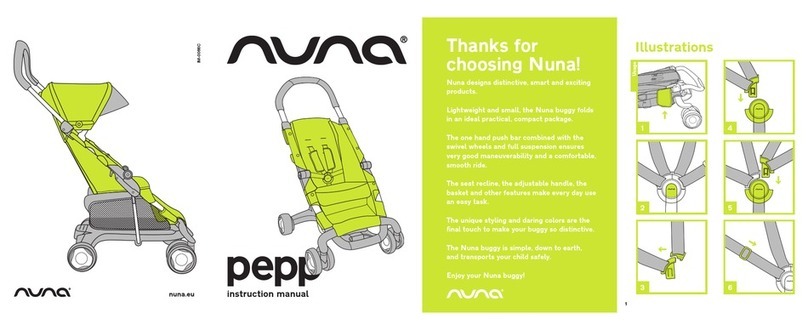
10
Non stirare
Non lavare a secco
MANUTENZIONE
Lubrificare le parti mobili, in caso di necessità, con olio secco
al silicone. Controllare periodicamente lo stato di usura delle
ruote e tenerle pulite da polvere e sabbia. Assicurarsi che
tutte le parti in plastica che scorrono sui tubi in metallo siano
pulite da polvere, sporco e sabbia, al fine di evitare attriti
che possano compromettere il corretto funzionamento
del passeggino. Tenere il passeggino in un posto asciutto.
PRIMO MONTAGGIO DEL PASSEGGINO
1. Aprire il gancio di chiusura (Fig.1) e spingere la parte
anteriore del passeggino in avanti fino a udire il click di
avvenuta apertura (Fig. 1A).
2. Procedere all’inserimento della ruota anteriore inserendola
nell’apposito foro, fino a sentire il click di bloccaggio (Fig. 2).
Ripetere la stessa operazione per la seconda ruota anteriore.
3. Per montare le ruote posteriori inserire il perno della ruota
nel foro del tubo gamba posteriore facendo combaciare
la parte piatta del perno con la sua corrispondente nel
foro del telaio, come indicato in figura 3. Ripetere la stessa
operazione per l’altra ruota.
ATTENZIONE: Prima di utilizzare il passeggino accertarsi
che le ruote siano ben fissate alla struttura.
4. Montare il cestello posizionando la parte con i nastri
verso il tubo anteriore, inserire i nastri nelle apposite asole
poste sul telaio agganciandoli con gli appositi bottoni
automatici (Fig. 4).
Agganciare il cestello nella parte centrale del tubo poste-
riore fissandolo ai due lati dello stesso con i due bottoni
automatici A indicati in figura 4A. Completare l’operazione
avvolgendo il tessile intorno al tubo fissandolo con i bottoni
automatici B (Fig. 4B).
MONTAGGIO DELLA SEDUTA: CONFIGURAZIONE
PASSEGGINO
Nell’imballo sono presenti il telaio passeggino e la seduta
chiusa.
5. Per montare la seduta sul passeggino è necessario aprirla
come mostrato nelle figure 5 – 5A, fino a udire il clack di
avvenuto bloccaggio.
6. Agendo sulla leva presente sullo schienale è possibile
modificare la posizione degli innesti (Fig. 6). Ora è possibile
installare la seduta sul telaio; la seduta può essere montata
sul passeggino in entrambe le direzioni: sia fronte strada
che fronte genitore (Fig. 6A).
ATTENZIONE: Accertarsi dell’effettiva installazione della
seduta tirando la stessa verso l’alto (Fig. 6B).
7. Per smontare la seduta premere i pulsanti laterali grigi e
tirare verso l’alto (Fig. 7).
ATTENZIONE: Non rimuovere la seduta dal passeggino
con il bambino all’interno.
REGOLAZIONI SCHIENALE
8. Una volta montata la seduta sul telaio, è possibile regolare
lo schienale in più posizioni: per abbassare lo schienale
agire sul sistema di regolazione posteriore premendo il
tasto e tirando verso il basso lo schienale (Fig. 8A) fino al
raggiungimento della posizione desiderata. Viceversa,
per alzare lo schienale, tirare il nastro verso l’alto (Fig. 8B).
REGOLAZIONI POGGIAGAMBE
9. E’ possibile regolare il poggia gambe in tre posizioni pre-
mendo contemporaneamente i pulsanti indicati in figura 9.
MANICOTTO RIMOVIBILE
Il passeggino è dotato di manicotto paracolpi rimovibile.
10. Per rimuoverlo è sufficiente agire sui pulsanti posti
lateralmente (Fig. 10).
11. Per posizionare e rimuovere il bambino è possibile sgan-
ciare il manicotto da un solo lato (Fig. 11).
ATTENZIONE: Allacciare sempre le cinture di sicurezza. Il
manicotto NON è un dispositivo di ritenuta del bambino.
ATTENZIONE: Il manicotto non deve essere utilizzato per
sollevare il passeggino con il bambino all’interno.
UTILIZZO DELLE CINTURE DI SICUREZZA
12. Il passeggino è dotato di sistema di ritenuta a cinque
punti di ancoraggio costituito da due spallacci, due asole
di regolazione, una cintura girovita ed uno spartigambe
con fibbia, già montati.
ATTENZIONE: Per adattare le cinture alla corporatura
del bambino è possibile utilizzare gli spallacci facendoli
prima passare attraverso le due asole di regolazione come
indicato in figura 12.
13. Dopo aver adagiato il bambino nel passeggino, allacciare
le cinture facendo passare prima le due forchette nell’a-
sola degli spallacci (Fig. 13) e poi inserendole nella fibbia
spartigambe (Fig. 13A); regolare la lunghezza delle cinture
facendole aderire alle spalle e al corpo del bambino.
14. Per sganciare la cintura girovita, premere e tirare le
forchette laterali (Fig. 14).
ATTENZIONE: Utilizzare sempre i sistemi di ritenuta. Per
la sicurezza del tuo bambino utilizzare tutti e cinque punti
di ancoraggio delle cinture di sicurezza.
FRENO DI STAZIONAMENTO
Il passeggino è dotato di un freno di stazionamento a pedale
posizionato sulla ruota posteriore destra.
15. Per inserire il freno di stazionamento occorre premere
con il piede il pedale verso il basso (Fig. 15).
Per disinserire il freno di stazionamento è necessario spingere
verso l’alto il pedale (Fig. 15A).
ATTENZIONE: Utilizzare sempre il freno quando si sosta.
Non lasciare mai il passeggino su un piano inclinato con den-
tro il bambino anche se il freno di stazionamento è inserito.
ATTENZIONE: Dopo aver azionato il freno di stazionamen-
to, assicurarsi che i freni siano correttamente innestati su
entrambi i gruppi ruota posteriori.
RUOTE PIROETTANTI
Il passeggino è dotato di ruote anteriori piroettanti/fisse.
Si consiglia di utilizzare le ruote fisse quando si percorrono
terreni particolarmente accidentati. Le ruote in modali-
tà piroettante, invece, sono consigliate per aumentare la
manovrabilità del passeggino su fondo stradale normale.
16. Per rendere le ruote anteriori piroettanti, spingere la leva
indicata in figura 16 verso l’esterno e ripetere l’operazione
anche per l’altra ruota.
Per bloccare le ruote anteriori, spingere la leva indicata
in figura 16A verso l’interno e ripetere l’operazione per
l’altra ruota.
